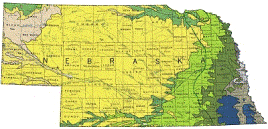United States Geological Survey

United States Geological Survey: Staff Publications
Document Type
Article
Date of this Version
2012
Citation
Remote Sensing of Environment 124 (2012) 217–223; doi:10.1016/j.rse.2012.05.002
Abstract
This paper presents a combination of techniques suitable for remotely sensing foliar Nitrogen (N) in semiarid shrublands – a capability that would significantly improve our limited understanding of vegetation functionality in dryland ecosystems. The ability to estimate foliar N distributions across arid and semi-arid environments could help answer process-driven questions related to topics such as controls on canopy photosynthesis, the influence of N on carbon cycling behavior, nutrient pulse dynamics, and post-fire recovery. Our study determined that further exploration into estimating sagebrush canopy N concentrations from an airborne platform is warranted, despite remote sensing challenges inherent to open canopy systems. Hyperspectral data transformed using standard derivative analysis were capable of quantifying sagebrush canopy N concentrations using partial least squares (PLS) regression with an R2 value of 0.72 and an R2 predicted value of 0.42 (n=35). Subsetting the dataset to minimize the influence of bare ground (n=19) increased R2 to 0.95 (R2 predicted=0.56). Ground-based estimates of canopy N using leaf mass per unit area measurements (LMA) yielded consistently better model fits than ground-based estimates of canopy N using cover and height measurements. The LMA approach is likely a method that could be extended to other semiarid shrublands. Overall, the results of this study are encouraging for future landscape scale N estimates and represent an important step in addressing the confounding influence of bare ground, which we found to be a major influence on predictions of sagebrush canopy N from an airborne platform.

